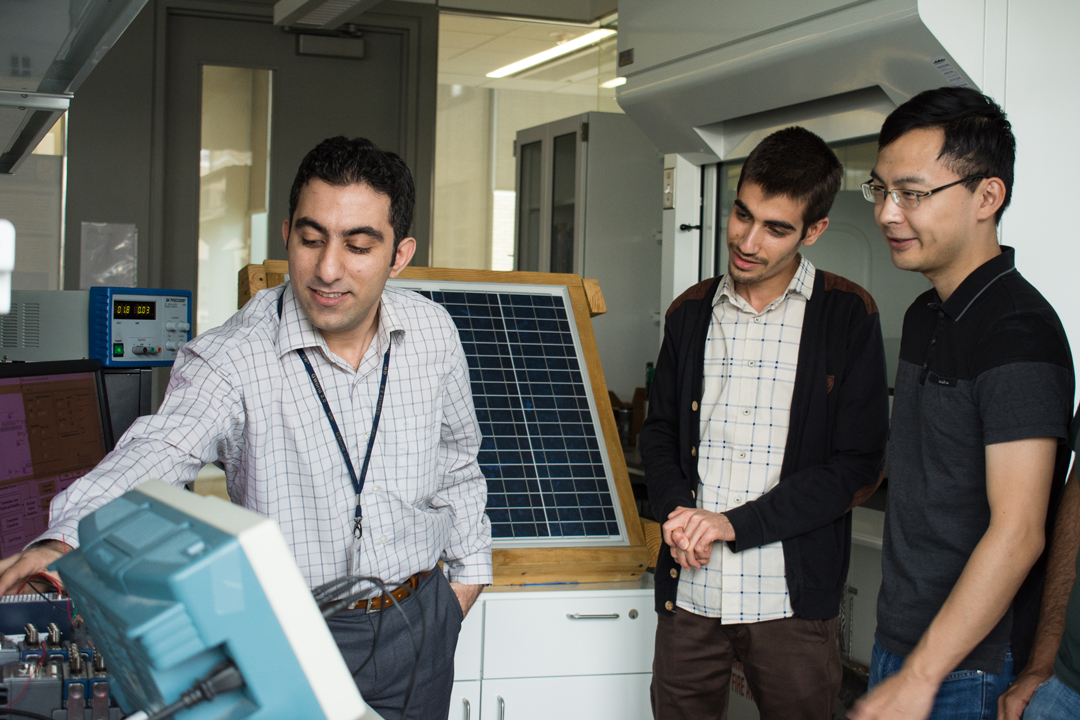By Lujain Al-Khawi
One of ECE’s newest faculty members is electrical engineering assistant professor Payman Dehghanian, a “Young Scholar in the Next Generation of Researchers in Power Systems” as termed by the Global Power and Energy Academic and Professional Community.
As the director and principal investigator of the GW SmartGrid Laboratory, he and his collaborators are striving to propose resilience-assured toolkits that tackle significant loss of electricity during natural disaster emergencies and man-made cyber attacks, specifically unexpected extreme events dubbed as high-impact low-probability (HILP) events.
When did the interest in safeguarding the nation’s electric power grid pique for the young researcher?
In 2003, the event of a utility company’s power disturbance inspired the then-college student to study power systems reliability and resilience to prevent future extensive impacts to human life caused by disruptions in electric power systems.
Fourteen years later, Hurricane Irma struck Florida and knocked out the power of over 6.7 million electricity customers—67% of all customer accounts in the state. Various industries were halted for days, and hundreds of people in need of special health care at homes and nursing facilities lost their lives due to sustained loss of electricity and the inability to swiftly restore their power.
Professor Dehghanian’s research, therefore, is tackling the aforementioned challenges through a synergistic suite of technical advancements on “forecasting”, “monitoring,” and “controlling” the power grid, thereby realizing an end-to-end solution to its resilience during HILP events.
In order to efficiently deal with the weather-driven or cyber-driven HILP incidents in a timely and effective manner, today’s operational planning tools should smartly account for high levels of unpredictability. They should take advantage of environmentally-friendly renewables as potential grid-support resources equipped with both analytical and human insights in deriving resilient plans and emergency response strategies. The high variability and intermittency of renewables has, however, limited their integration and storage largely to day-to-day normal operating conditions. Indeed, existing technologies remain highly deficient in various respects, including (i) the lack of a high-performance high-fidelity forecaster for environmentally-driven renewable energies (considering the spatiotemporal correlations of these resources and fast, yet efficient, utilization of big data analytics); (ii) a lack of a computationally-efficient HILP event characterizer that can effectively handle the sheer number of possible scenarios in large-scale power grids; (iii) a failure to capture the “value of resilience” for the grid planning and operations; (iv) solution incompatibility with modern power system monitoring, operation, and control paradigms (i.e., with reconfigurable architectural designs and advanced control mechanisms); and (v) a lack of user-friendly human-machine interactive platforms and risk-profile options for supporting operators’ decision-making.
Clearly, engineers must overcome these shortcomings to enable the large-scale adoption of environmentally friendly sources of energy, while guaranteeing system reliability, flexibility, and resiliency during normal and emergency operations. Finding holistic solutions to the above challenges is the focus of the research conducted at the GW SmartGrid Laboratory.
Finding attractive, yet computationally-efficient solutions to predict and prepare for emergency power loss events has earned Professor Dehghanian multiple roles in many prestigious peer-reviewed journals and conferences within power systems engineering.


